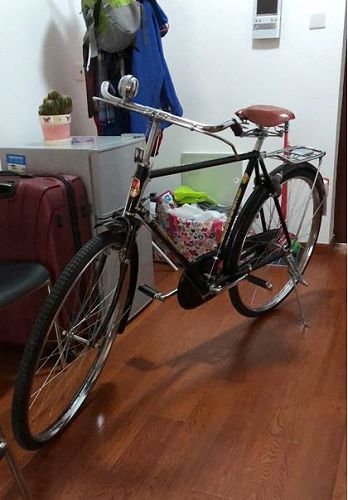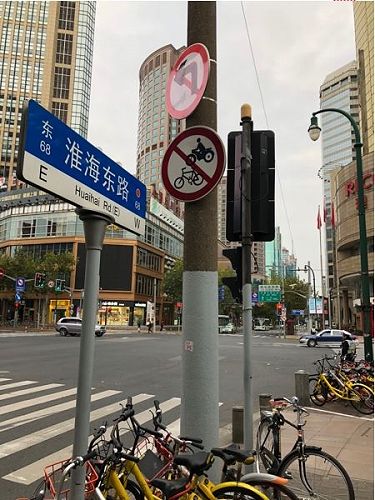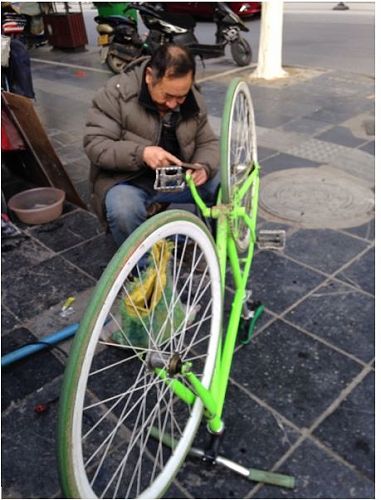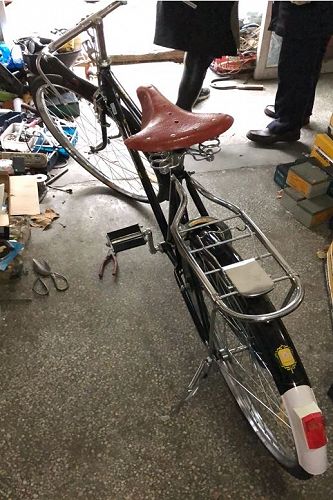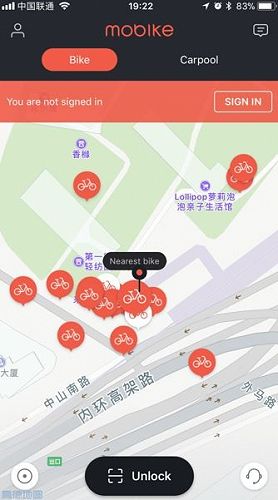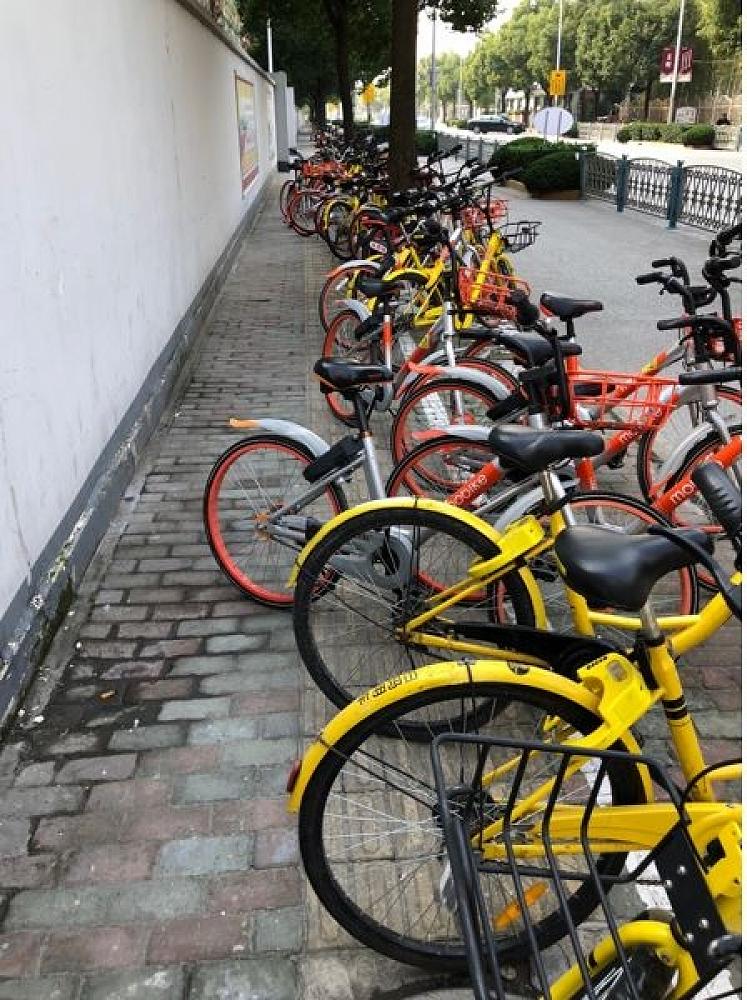
City Cycling in China – Don’t look back!
On my third longer than a month trip to China, this time to visit and be a guest exchange English teacher at my school’s sister school in Shanghai, I knew I’d have to buy another bicycle.
I’d spent two one month stints in the relatively small (only a few million people) town of Guilin in my never-ending quest to learn Chinese. I’d bought a fake fixie style bike in Guilin in December 2014 with a single back-pedal brake and beautiful green tyres for around $85 NZD.
I’d used it daily for a month and left it at the language school I was at with a young American student along with the promise she “pay it forward” after she finished her month long course to someone else who wanted to experience the very best way to travel short to middle distances in urban China. Imagine my surprise when two years later I returned to the same school in December 2016 to find my bicycle stored on an upper floor at the school and only in need of a patch on the back tube from a local street vendor to get it back in action. I used that bicycle for my second month in Guilin and finally left it there for the next visitor who could make use of it so I knew when I got to Shanghai I’d have to find another bike for my nearly three month stay this time.
The nation that used to only have bicycles as transport for its millions of private citizens is still a fantastic place to cycle now that the car has made its inevitable appearance. Shanghai is flat and the bicycle is a daily ubiquitous form of short distance transport for many of the 25 million citizens of the metropolis. Although I could have used one of the nearly half a million “leave them anywhere” city hire bikes in Shanghai which now clog the footpaths forcing the locals to walk on the road to get around them, not having a Chinese bank account or Alipay I decided to go for buying one of the classics.
After a half day quest to the far reaches of Shanghai by the remarkably efficient, punctual, comfortable at anytime other than rush hour, just 25-year-old subway system which covers the entire city and provides trips for about 20 cents a time, and after a bit of a walk through some poorer suburbs where the kids still laugh nervously at the novelty of a foreigner, I found the perfect old cycle/scooter/home appliance/probably get you anything else you want shop with a brand new Yong Jiu men’s upright cycle. The Yong Jiu (English translation “The Permanent or Forever”) brand has been making this style of bike since the 1940s but this beauty looked near new.
After a quick tickle up, smack with a hammer on the cotter pins on the crank arms and installation of a lock, I was riding home on it and the locals were smiling, but politely not laughing out loud, at a “Waiguoren” foreigner on a Yong Jiu. One of my students told me a few days later it was “a classic”. I felt right at home on the trusty steed with calliper and push rod brakes and a single gear to encourage the push harder philosophy of proletarian cycling.
The daily ride up to the 26th floor of my apartment building in the lift kept the 116 NZD full price purchase out of the hands of the Shanghai bicycle thief mafia and after my three months in China the bicycle would be housed at my exchange school for any other future exchange teacher who wanted to venture out onto Shanghai’s streets. The everywhere in Asia I’ve found so far cycling philosophy of “don’t look back, just worry about what’s in front of you” applies in China too. Red lights can legitimately be turned on to the right (cars, trucks and buses too so be careful) and are in any case merely a loose guideline for bicycles. Intersections with red lights are often treated as uncontrolled intersections by bicycles unless police officers are controlling them which only generally occurs around rush hour or in the very centre of the city. This apparent anarchy actually works really well. The average city speeds are pretty slow and in the cycle lanes moving with the flow at all times is the best policy. Don’t do anything sudden or unexpected and eye contact solves most issues. I never encountered one piece of even mild road rage from anyone on the road in China be it cyclist, pedestrian or car driver. Everyone is very chill and no one loses face. The authorities though have their own approach to keeping order in a city more than five times the population of New Zealand. After being stopped by police officers a week or two into my stay, first saluted and then upbraided and dressed down in shouty Chinese I didn’t in any way understand other than by the tone, for riding on the road instead of using a street with a cycle lane, I finally clicked on to the great big blue circle signs indicating that neither scooters nor cycles should be on this particular piece of road. Doh!
Muffled protestations of “I don’t understand or “I don’t know” in my lousy Chinese got me out of the worst of it but I made a mental note to pay more attention in the future. Playing the ignorant foreigner card will only work so many times.
Shanghai hire bikes
The city hire bicycles are a move on from the Boris bikes of London or the ones I’d seen in Montpellier a few years ago or indeed the ones that had been in Guilin too with docking stations they needed to be returned to. You didn’t have to go back to where you got it from but you did need to return it to a limited number of places where docking ports existed. This made it more likely you’d not take the cycles rather than use them. The new system in China is of course that you can leave them more or less where you like. This is a screen shot from my phone using the Mobike app at my apartment in Shanghai showing dozens of bicycles within a few metres of my front door.
The bikes are GPS tracked. So you can find a bike, book it for 15 minutes till you pick it up and open the lock by scanning the QR code on the bicycle using your cellphone. It’s not exactly like Uber because clearly no driver but the bikes are everywhere, very cheap (cents for an hour and some have no charge for the first half hour) and do the job. The fact they are left everywhere is the great positive for the system but also its possible killer. There have been movements from the authorities on one side and the companies on the other to organise things and tidy up the streets a wee bit. There are now crews of cycle maintenance and re-distribution workers keeping the system running with a truck full of bikes. The private companies in China offering this service are being bankrolled by venture capitalists all over the world to the tune of millions of dollars so there are now half a million hire bicycles in Shanghai alone. The rumour is that one of the hire companies is about to buy Taiwanese cycle manufacturer Giant to make sure the supply of cycles never ends! Like Uber though you have an account and profile and therefore you earn and lose points depending on how you behave on the road and treat the bicycle. Get stopped by the cops and you end up paying more the next time or can be banned. Leave it in a non-designated parking area then and you’ll also suffer the consequences to your profile. People are generally pretty good about the way they treat these simple and robust cycles and its becoming just a normal part of Shanghai life.
Links for Hire Bike articles
http://www.smartshanghai.com/articles/tech/tested-the-mobike
Gallery
